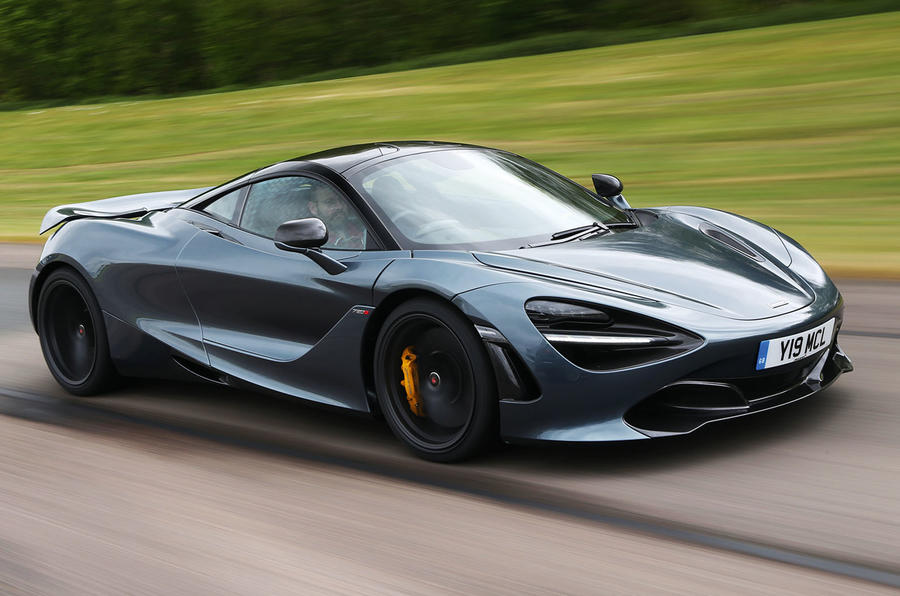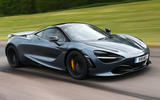There’s much debate at the moment about what constitutes a supercar, what is a hypercar and what exactly a supersports car is.
The differences in terms of bald speed are pretty clear: hypercars (Bugatti Veyron Super Sport, McLaren P1, Porsche 918 Spyder) need about 10 seconds for a standing quarter mile; ‘modern’ mid-engined supercars (488 GTB, Lamborghini Huracán) typically need about 11 seconds and supersports cars (Porsche 911 Turbo, Nissan GT-R, Jaguar F-Type SVR) tend to need about 12 seconds.
The 570S, of course, took an axe to that logic with its supercar-level acceleration for supersports car outlay. And the 720S does precisely the same thing, just a rung farther up the performance ladder.
It’s as if redefining established performance benchmarks has become a minimum requirement of any new McLaren.
The 720S’s 10.4sec standing-quarter pace is much closer to that of a P1 (10.2sec) than that of its direct Ferrari rival, the 488 GTB (10.9sec).
With two passengers on board, a full tank of fuel and averaged over two directions, it also recorded a 2.9sec 0-60mph and an equally staggering 5.6sec 0-100mph showing.
Upshot? The 720S could give that Ferrari a head start of almost three seconds – allowing the 488 to have hit 60mph before the 720S had even moved – and still beat the Italian to 170mph. And then go on to hit 190mph within a standing mile, less than a second slower than a P1 would have, and also allow a little room for braking. ‘Fast’ hardly does the car justice.



















































